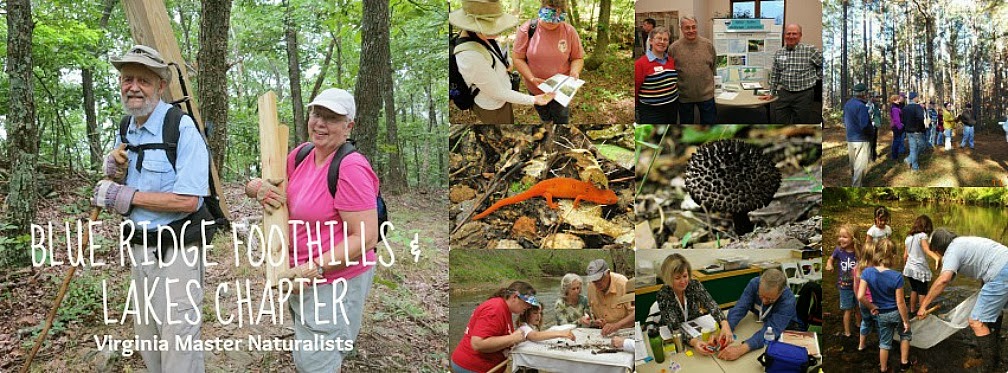Meet Terrestrial Newt, isn't he cute?
 |
| Eastern Newt or Red-spotted Newt living at Booker T Washington National Monument in VA |
 |
| Newts are gentle forest creatures as Tim Quinn shares with the class |
 |
| This Newt is a youth |
Eastern Newts have three stages of life: the aquatic larva or tadpole, the red eft or terrestrial juvenile stage, and the aquatic adult. The larva possesses gills and does not leave the pond environment where it was hatched. Larvae are brown-green in color, and shed their gills when they transform into the terrestrial red eft. The red eft is bright orangish-red in color, with darker red spots outlined in black. An Eastern Newt can have as many as 21 of these spots. The pattern of these spots differs among the subspecies. During this stage, the eft may travel far, acting as a dispersal stage from one pond to another, ensuring outcrossing in the population. After two or three years, the eft finds a pond and transforms into the aquatic adult. The adult's skin is olive green, but retains the eft's characteristic outlined red spots. It has a larger and wider tail and characteristically slimy skin.
Kingdom:Animalia
Phylum: Chordata
Class: Amphibia
Order: Caudata
Family: Salamandridae
Genus: Notophthalmus
Species: N. viridescens
Eastern Newts are at home in both coniferous and deciduous forests. They need a moist environment with either a temporary or permanent body of water, and thrive best in a muddy environment. During the eft stage, they may travel far from their original location. Red efts may often be seen in a forest after a rainstorm. Adults prefer a muddy aquatic habitat, but will move to land during a dry spell. Eastern Newts have some amount of toxins in their skin, which is brightly colored to act as a warning.
Eastern newts eat a variety of foods such as insects, small mollusks and crustaceans, young amphibians, and frog eggs. They also eat worms.
- Learn more about Newt here.
- This May field-trip for the BRFAL Chapter of Virginia Master Naturalist en-training was conducted at Booker T Washington National Monument. Walk the footsteps of history at Booker T National Monument.
- Visit the NPS website here. Learn more about Booker T here.
*Clever headlines are to grab your attention, this blog is in no way endorsing any candidate.

No comments:
Post a Comment
Thanks for your comment and interest! NOW GO OUTSIDE!